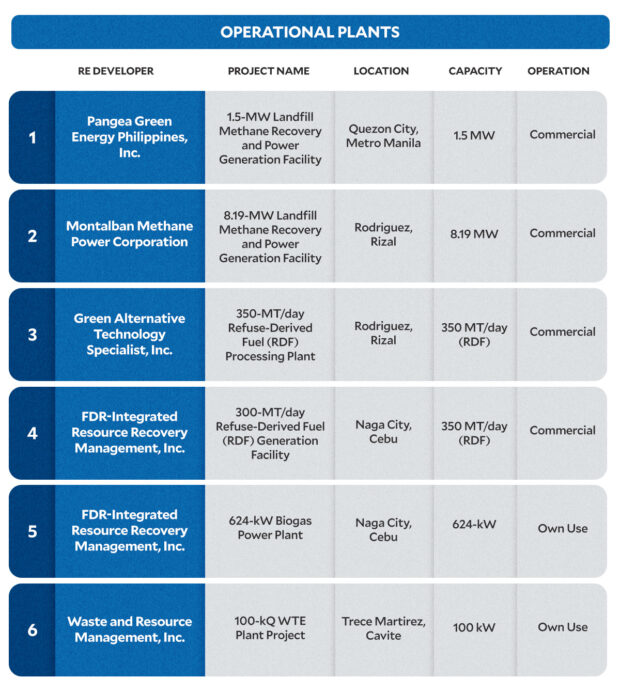Risks loom as worsening garbage mess pushes deep PH dive into waste-to-energy
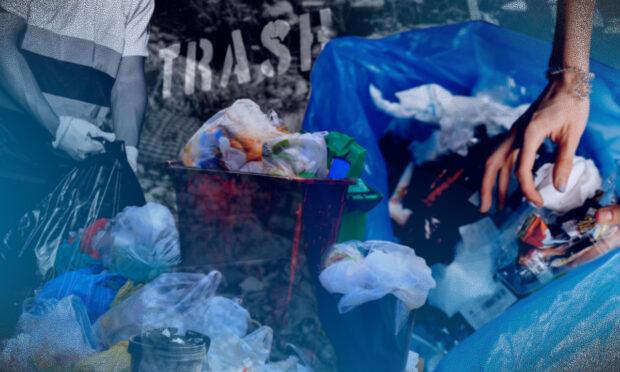
COMPOSITE IMAGE: JEROME CRISTOBAL / INQUIRER STOCK PHOTO
(First part)
MANILA, Philippines—As solid waste management persists as a significant challenge in the Philippines, the government is prompted to explore waste-to-energy (WTE) initiatives as a dual strategy to mitigate waste and foster energy production.
However, while various private stakeholders and the government back several actions and policies supporting WTE projects, both local and global organizations dedicated to sustainable waste management and climate change mitigation strongly expressed caution.
The groups warned the public against the potential negative impacts of WTE technologies, suggesting that the purported benefits might not fully align with reality, often described as “too good to be true.”
A ‘losing war’ vs plastics
According to Environment Secretary Maria Antonia Yulo-Loyzaga, the Philippines generates as much as 61,000 metric tons of solid waste daily —enough to fill up approximately 37 Olympic-sized swimming pools.
This daily accumulation of waste includes roughly 163 million plastic sachet packets, 48 million shopping bags, and 45 million thin-film bags. Alarmingly, only a third of this waste reaches landfills and dumps, while an estimated 35 percent ends up in the ocean.
“We are not winning the war definitely against single-use plastics,” she said at a press conference during the observation of the World Environment Day last year.
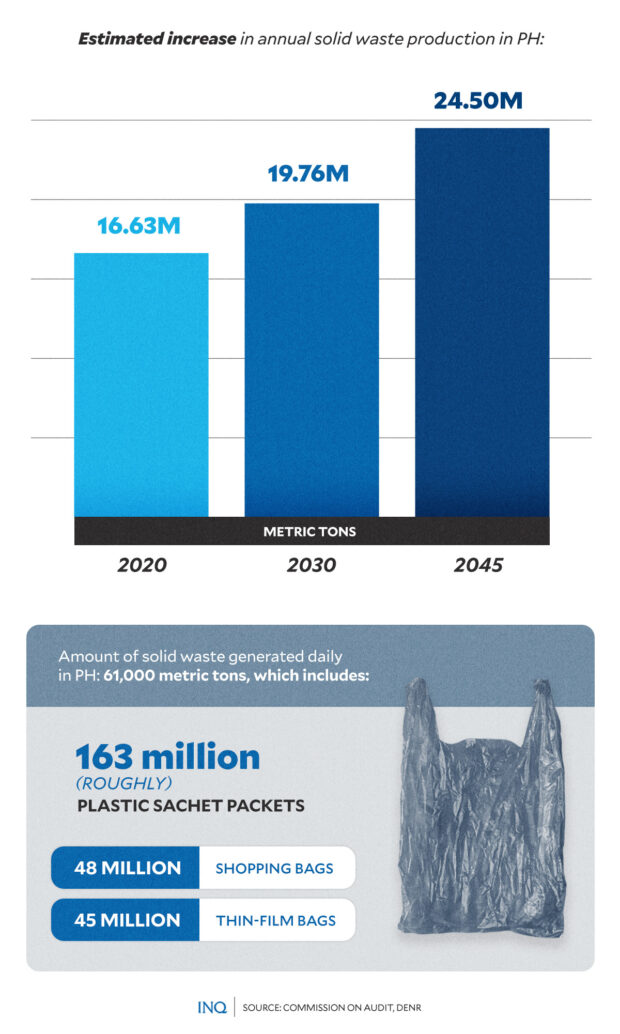
GRAPHIC Ed Lustan
In 2021, a peer-reviewed study by Ocean Cleanup, an engineering environmental NGO based in the Netherlands, revealed that the Philippines contributes a staggering 36 percent of plastic waste found in the oceans.
The study further identified that 466 Philippine rivers discharge 356,371 metric tons of mismanaged plastic waste into the sea annually.
READ: There’s toxic plastic in your water: Groups see strong treaty as solution
These daunting numbers were discovered despite existing efforts to address these ongoing issues, including the Extended Producer Responsibility Act (EPA), which lapsed into law in 2022. The legislation focuses on the proper management of plastic packaging waste.
Poor implementation of the law
Last year, the Commission on Audit (COA) highlighted that the government is still grappling with effective waste management even after over two decades since the enactment of Republic Act No. 9003, the Ecological Solid Waste Management Act of 2000.
In a report, COA revealed a worrying increase in solid waste, from 9.07 million metric tons in 2000 to 16.63 million in 2020, with projections suggesting a rise to 24.50 million tons by 2045 due to population growth and industrialization.
Despite RA 9003’s emphasis on ecological practices like recycling and composting, state auditors also observed that local government units (LGUs) have been slow to implement solid waste management plans.
READ: Running out of landfills
The audit also found a significant lack of material recovery facilities (MRFs) and sanitary landfills (SLFs), with only 39.05% or 16,418 out of 42,046 barangays served by 11,637 total MRFs in the country in 2021.
“[B]ased on interviews and validation, the goal of local governments to provide accessible MRFs for barangays was met with financial, logistical, and technical issues,” COA explained, adding that the shortage hampers waste diversion efforts, increasing the likelihood of mixed waste collection and improper disposal.
COA also said that during the same year, only 29.25 percent, or 478 of 1,634 local government units (LGUs) in the country, have access to SLFs despite the steady increase of generated solid waste.
“As a result, a number of LGUs were also left with no other resort but to reopen or establish new illegal dump sites,” the report noted.
Waste-to-energy: A viable solution?
A 2020 study published in Science Direct stressed that with the lack of MRFs equipped with technologies to reduce wastes like recycling and composting, most of the municipal solid wastes in the country either end up in dumps or are openly burned — which further pollute the air in cities.
With the rise of municipal solid wastes in local landfills, the growing health and environmental problems brought by burning and dumping wastes, and the rising demand for cleaner sources of energy, the government is looking at adopting alternative solutions such as WTE approaches.
WTE involves generating energy from waste, typically transforming non-recyclable waste materials into usable heat, electricity, or fuel through diverse processes.
In 2019, the Department of Environment and Natural Resources (DENR) said it is pursuing WTE technologies to help address the growing waste problem in the country.
Later that year, a department administrative order (DAO) was issued by the DENR providing guidelines on the establishment and operation of WTE facilities for the treatment of municipal solid waste in the country.
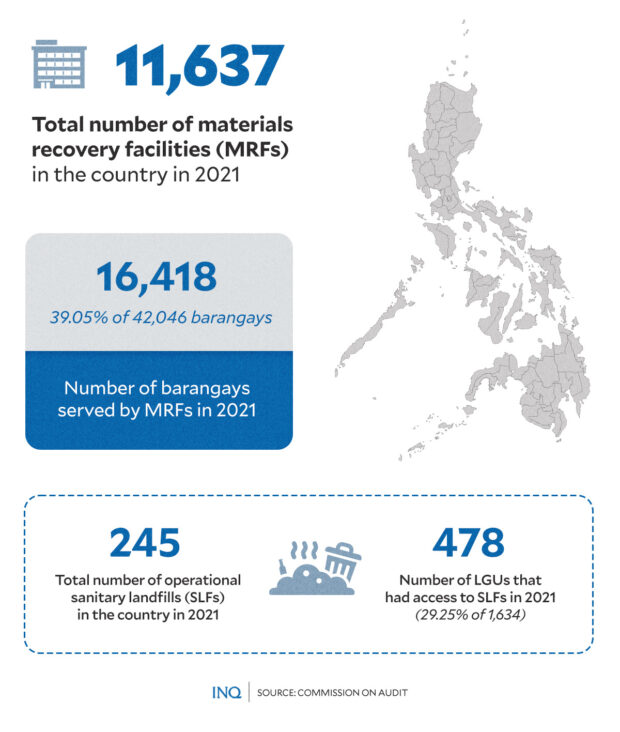
GRAPHIC Ed Lustan
The DENR considers WTE as a “cleaner and more suitable alternative” to the traditional sanitary landfill, which is the allowed waste disposal method under RA 9003.
In 2022, the Department of Energy (DOE) issued Department Circular No. 2022–02-0002, which prescribes the policies and programs to promote and enhance the development of biomass WTE facilities in the country.
The department circular noted that the DOE recognizes that biomass WTE facilities “simultaneously achieve the twin socio-economic benefits on Local Government Units’ (LGUs) solid waste management and the provision of an additional source of power supply.“
It further noted that biomass WTE is a relevant intervention that helps reduce methane emissions by converting wastes into usable heat, electricity, or fuel.
Under Section 30 of RA 9513, also known as the Renewable Energy Act of 2008, the DOE is mandated to promote the use of WTE facilities and technologies, such as biogas systems. This mandate is conditional upon adherence to the provisions of both RA 8747 or the Clean Air Act of 1999 and RA 9003.
Waste-to-energy technologies, as defined in RA 9513, include systems that convert biodegradable materials like animal manure or agricultural waste into energy via processes such as anaerobic digestion and gasification, among others.
Waste-to-energy bill pushed
Last week, Senator Raffy Tulfo stressed the need to establish WtE plants, not just as a solution to the current waste management problems, but also due to their “great potential” as a source of renewable energy in the country.
Tulfo, who also serves as chairperson of the Senate Committee on Energy, made the remark following his meeting with Singaporean Minister for Sustainability and the Environment Grace Fu as part of his official visit to Singapore.
The two discussed the regulation of WtE facilities in Singapore when it comes to air quality. The senator said Fu also mentioned during their meeting the importance of proper waste management to effectively harness energy from the WtE facility.
Tulfo sponsors the proposed Waste-to-Energy Act, or Senate Bill 2267, under Committee Report 91, which reached the Senate plenary last July.
The bill promoted the use of WtE facilities for the proper management and disposal of household wastes. The lawmaker, in a sponsorship speech last year, stressed that many countries, such as Japan, Sweden, South Korea, and Singapore, have long been relying on WTE technology.
“Currently, sanitary landfill is the primary long-term method of solid waste disposal under RA 9003 or the Ecological Solid Waste Management Act of 2000. But sanitary landfill requires vast parcels of land to accommodate our ever-growing waste production,” he said.
“Unfortunately, land is limited, and it is far from being the picture-perfect solution to our garbage problem. In fact, it is a major source of pollution,’’ he added.
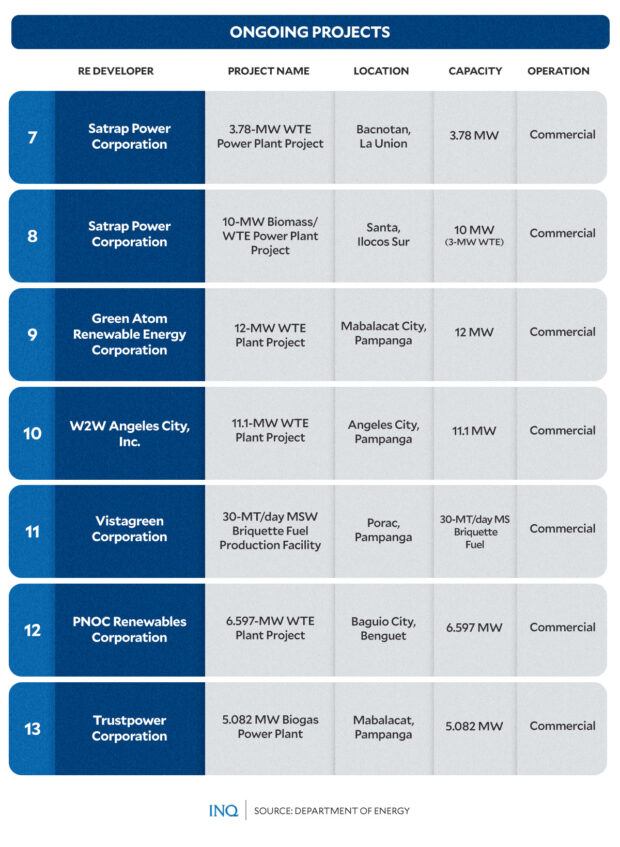
GRAPHIC Ed Lustan
The bill, however, explicitly prohibits the use of imported waste as feedstock for WTE facilities to safeguard the country from becoming a dumping ground for foreign waste.
“Let us weigh the advantage of opening our doors to this technology that creates energy out of our waste. Other countries will not use this without considering its risks and problems,” he said.
“It is high time we adjust our policies to welcome this technology and move forward towards a greener approach in waste management and energy generation,” he added.
Passage of waste-to-energy bill sought
Data procured from DOE showed that there are currently a total of 13 WTE plants or projects that are registered with the department under RA 9513, utilizing municipal solid waste or industrial waste as feedstock.
Out of those 13 WTE plants and projects, six are operational, while seven are still marked as ongoing projects.
Aside from meeting the Singaporean minister for sustainability and the environment, Tulfo likewise attended a dinner meeting with business executives, some of whom are already investing in the country.
During the meeting, business leaders deliberated on the advantages and challenges of implementing WTE. Additionally, they proposed various policies and strategies that could facilitate the effective operation of a successful WTE system.
Tulfo said the meeting could also help him and his legislative team in pushing for the swift passage of his WTE Bill, which is now on the Senate’s 2nd reading.
Despite the government and legislative efforts to embrace WTE technology in the country, various environmental groups and international bodies caution against it, labeling WTE as a “false solution” to the nation’s waste management issues.
The advocates also emphasized that WTE could potentially be as harmful, if not more, in terms of pollution and environmental impact, compared to current waste management practices that are expensive and detrimental to the environment.
(Next: Groups voice concerns on ‘more toxic’ WTE technology in PH)
